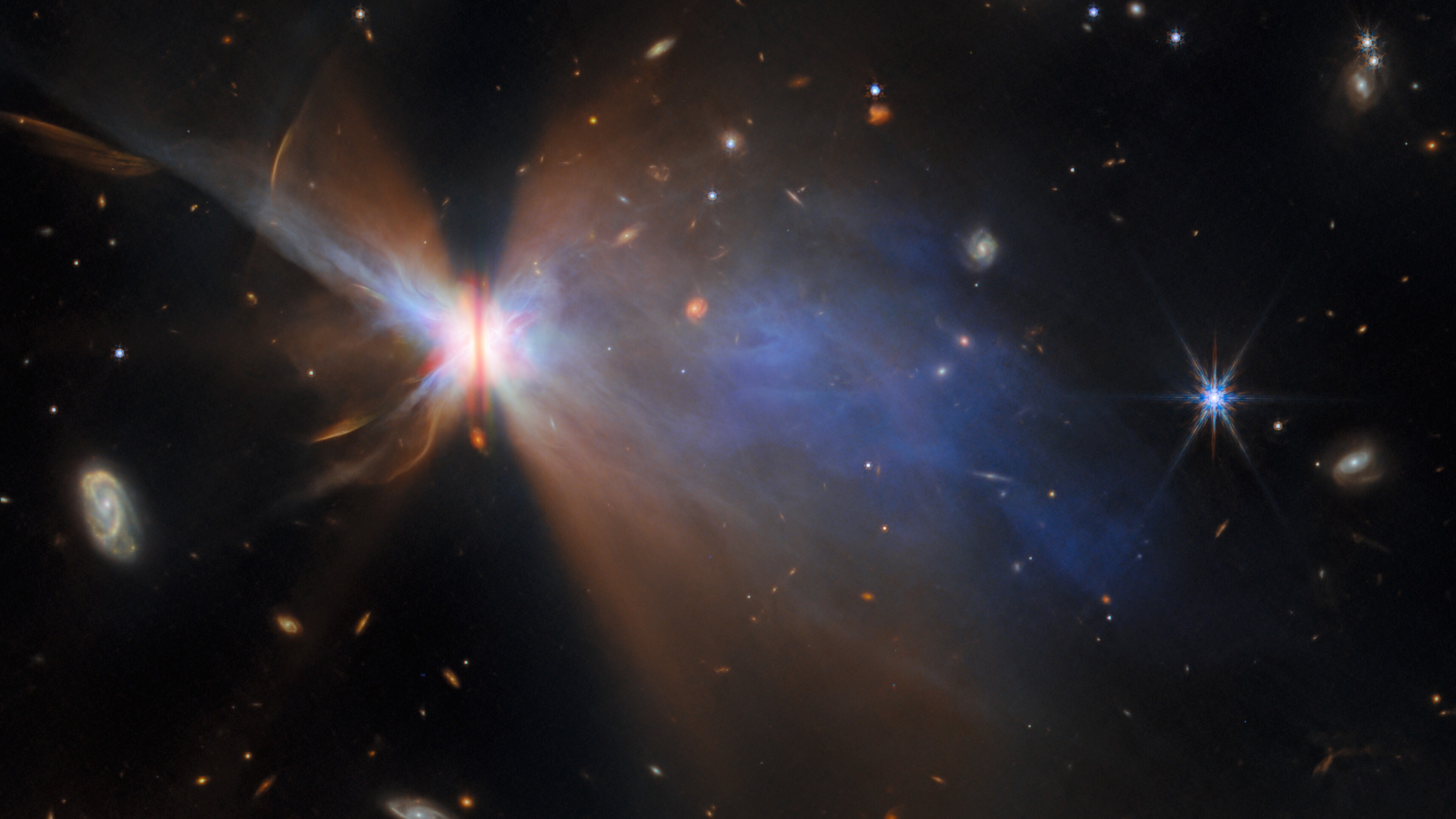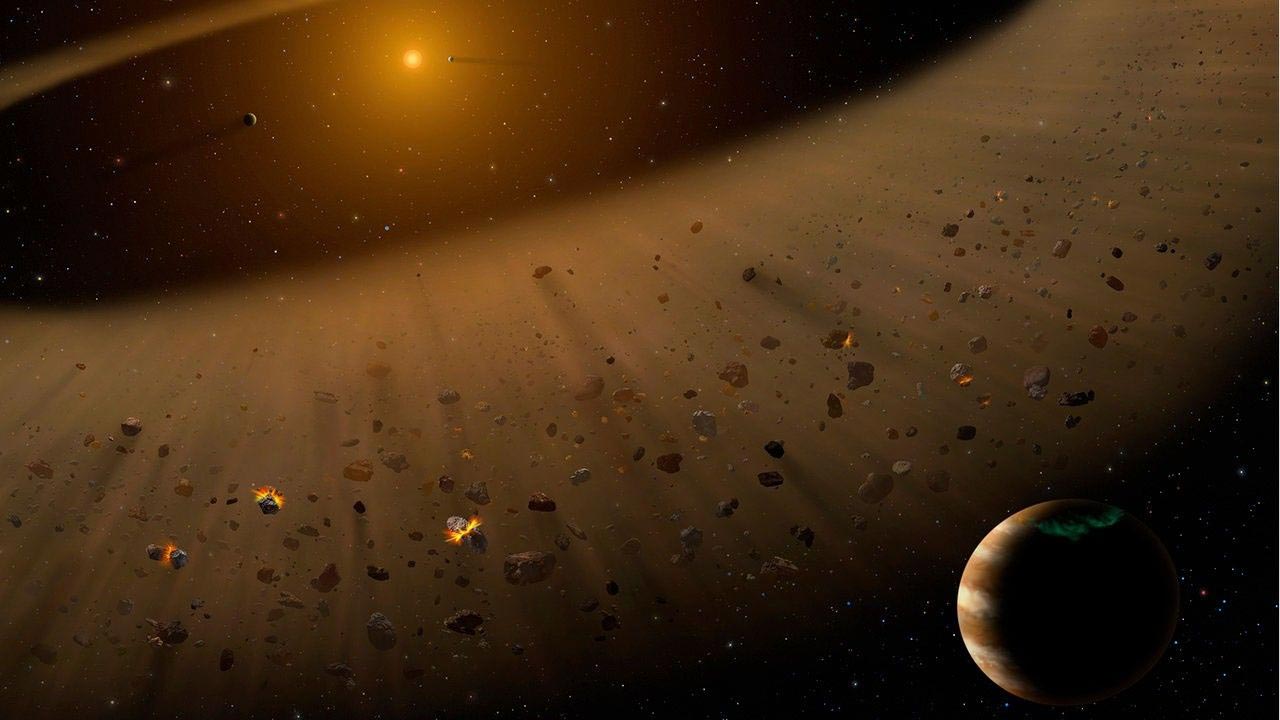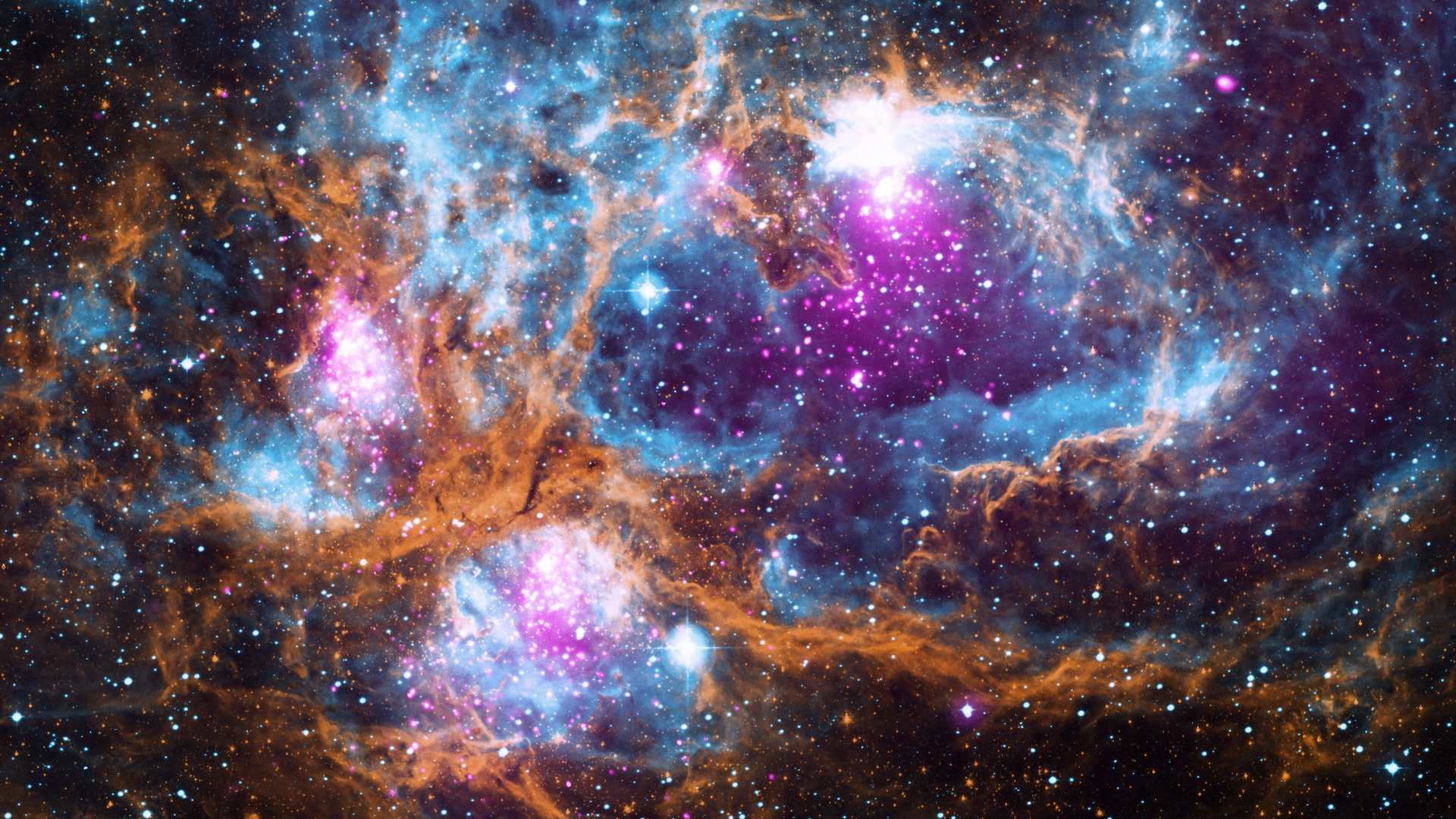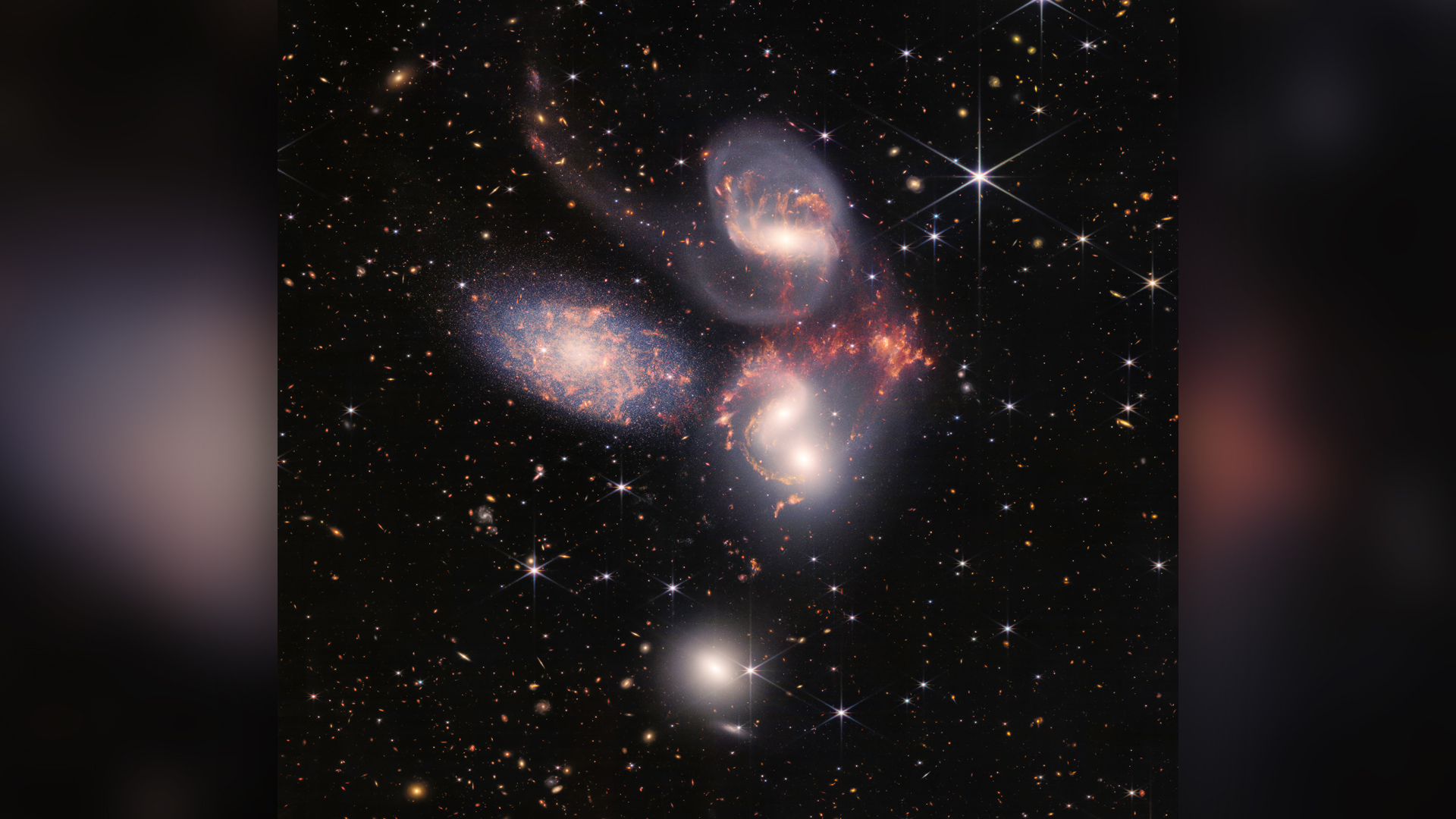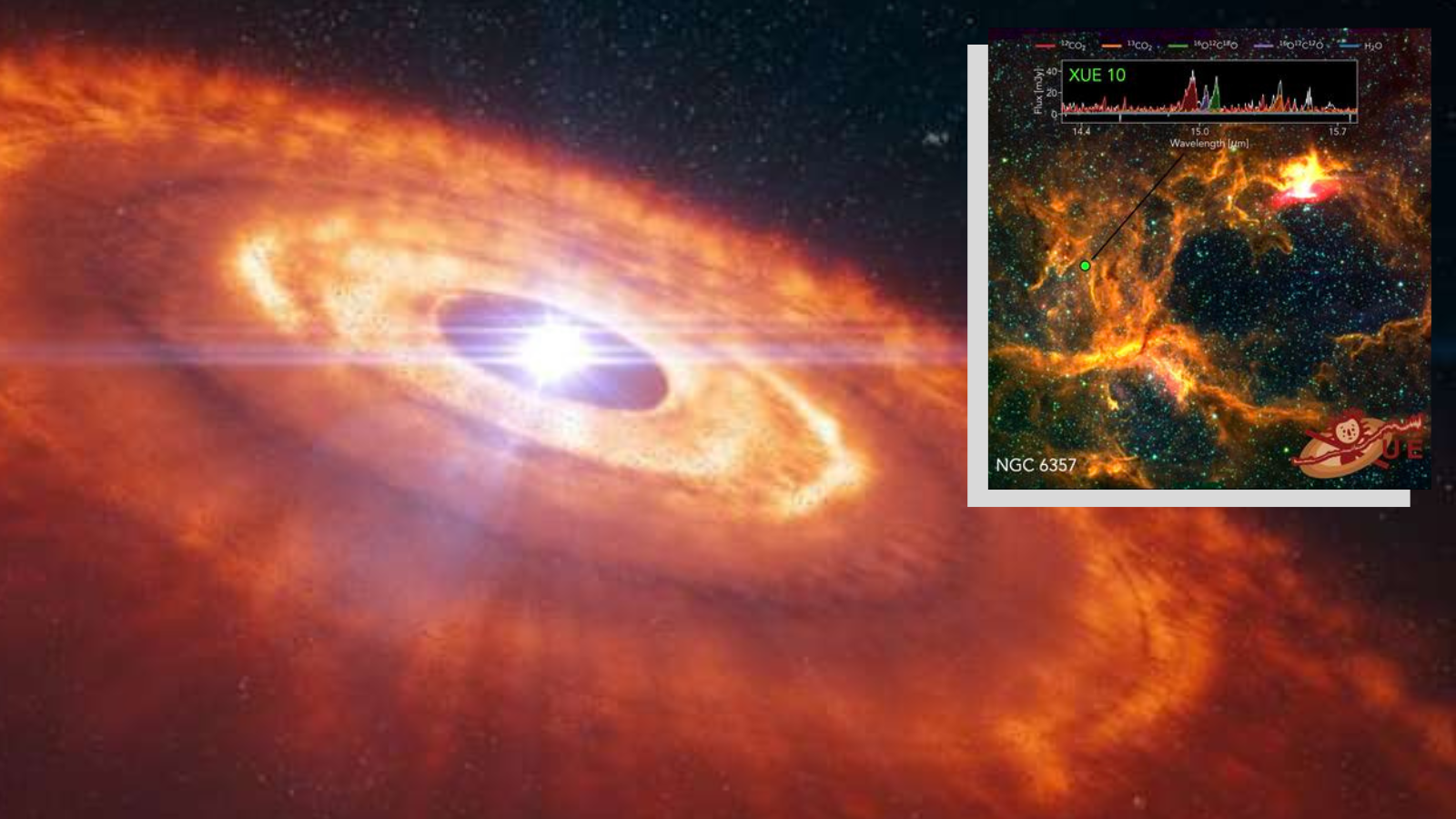QUICK FACTS What it is: A planet-forming disk around a star Where it is: 525 light-years away, in the constellation Taurus When it was shared: Aug. 29, 2025 This spectacular new image from the James Webb Space Telescope (JWST) shows a star cocooned within a massive disk of gas and dust. It’s a protoplanetary disk — a ring of dense …
Read More »Tag Archives: Webb
Thousands of newborn stars dazzle in the latest snapshot by NASA’s Webb Space Telescope
CAPE CANAVERAL, Fla. — Thousands of newborn stars sparkle and dazzle in the latest snapshot by NASA’s Webb Space Telescope. Released this week, the picture provides a breathtaking view of a nearby star-birthing center, 5,500 light-years away. A single light-year is 5.8 trillion miles. Besides baby stars in a variety of sizes and colors, the photo reveals a dramatic cloud …
Read More »Webb Telescope Spots a “Blob” Near a Star, but Is It a Planet?
Artist’s depiction of the Epsilon Eridani system, including the elusive planet Epsilon Eridani b. Credit: NASA/SOFIA/Lynette Cook JWST placed new limits on planets around Epsilon Eridani and demonstrated an improved technique for spotting faint signals. In science, a negative finding can be just as valuable as a positive one. Even the most advanced observatories are sometimes challenged by data artifacts, …
Read More »Newborn stars dazzle in NASA’s Webb Space Telescope image of the Lobster Nebula
CAPE CANAVERAL, Fla. (AP) — Thousands of newborn stars sparkle and dazzle in the latest snapshot by NASA’s Webb Space Telescope. Released this week, the picture provides a breathtaking view of a nearby star-birthing center, 5,500 light-years away. A single light-year is 5.8 trillion miles. Besides baby stars in a variety of sizes and colors, the photo reveals a dramatic …
Read More »James Webb telescope spots odd disk around star that could shatter planet formation theories
A bizarre planet-forming disk is full of carbon dioxide in the regions where Earth-like planets could form, fresh observations from the James Webb Space Telescope (JWST) show. Usually, such planet-forming disks contain water, but “water is so scarce in this system that it’s barely detectable — a dramatic contrast to what we typically observe,” Jenny Frediani, a doctoral student in …
Read More »Glittering Glimpse of Star Birth From NASA’s Webb Telescope
This is a sparkling scene of star birth captured by NASA’s James Webb Space Telescope. What appears to be a craggy, starlit mountaintop kissed by wispy clouds is actually a cosmic dust-scape being eaten away by the blistering winds and radiation of nearby, massive, infant stars. Called Pismis 24, this young star cluster resides in the core of the nearby …
Read More »James Webb telescope discovers ‘exceptionally rare’ 5-galaxy crash in the early universe
Astronomers have discovered an incredibly rare system in which at least five galaxies from the early universe are merging — just 800 million years after the Big Bang. The remarkable discovery was made using data from the James Webb Space Telescope (JWST) and the Hubble Space Telescope. Galaxy mergers play a key role in galaxy formation in the early universe. …
Read More »NASA’s Webb Telescope just found 300 galaxies that defy explanation
In a new study, scientists at the University of Missouri looked deep into the universe and found something unexpected. Using infrared images taken from NASA’s powerful James Webb Space Telescope (JWST), they identified 300 objects that were brighter than they should be. “These mysterious objects are candidate galaxies in the early universe, meaning they could be very early galaxies,” said …
Read More »James Webb Telescope Captures Space Butterfly – The Weather Channel
James Webb Telescope Captures Space Butterfly The Weather Channel James Webb Space Telescope spots odd planet-forming disk around infant star Space Dusty wisps round a dusty disc European Space Agency Unusual CO₂-rich disk detected around young star challenges planet formation models Phys.org Abundant carbon dioxide in planet-forming disk challenges planet origin models Penn State University Source link
Read More »James Webb Space Telescope spots odd planet-forming disk around infant star
Using the James Webb Space Telescope (JWST), astronomers have discovered a strange disk of gas and dust around an infant star that could challenge current models of planet formation. The protoplanetary disk has an odd chemical composition. It features a surprisingly high concentration of carbon dioxide in the region in which rocky planets like Earth are expected to form and …
Read More »